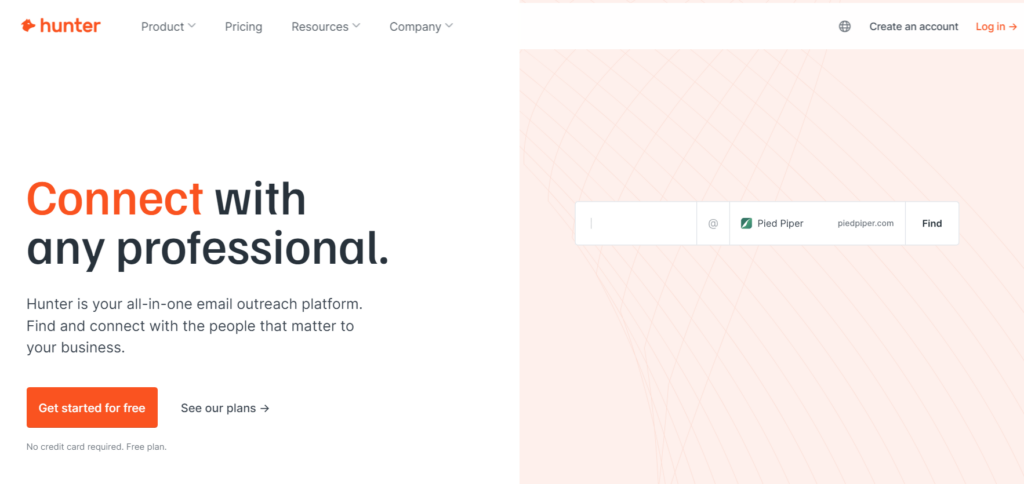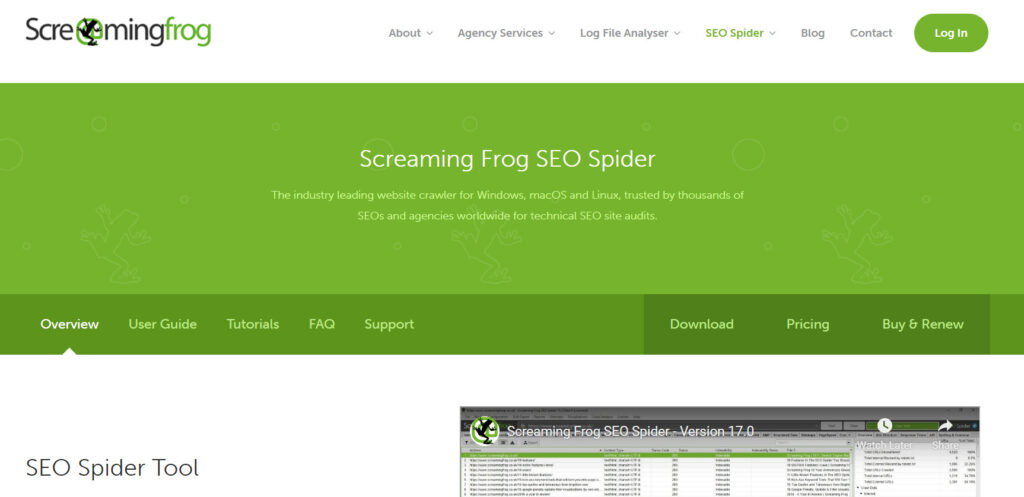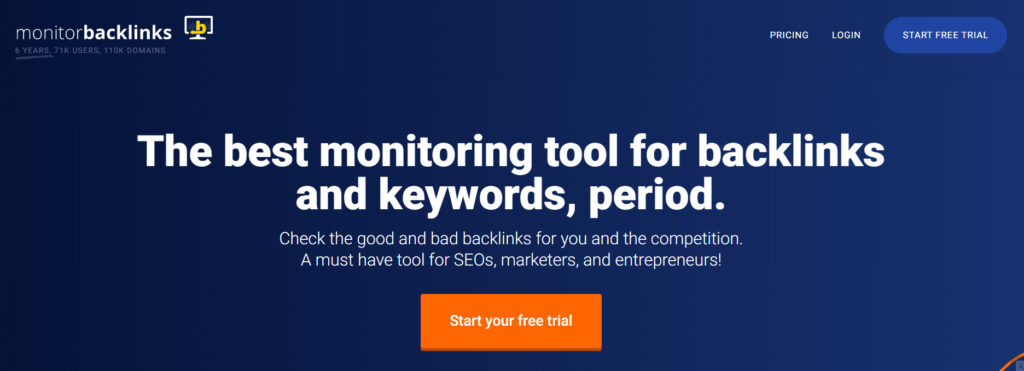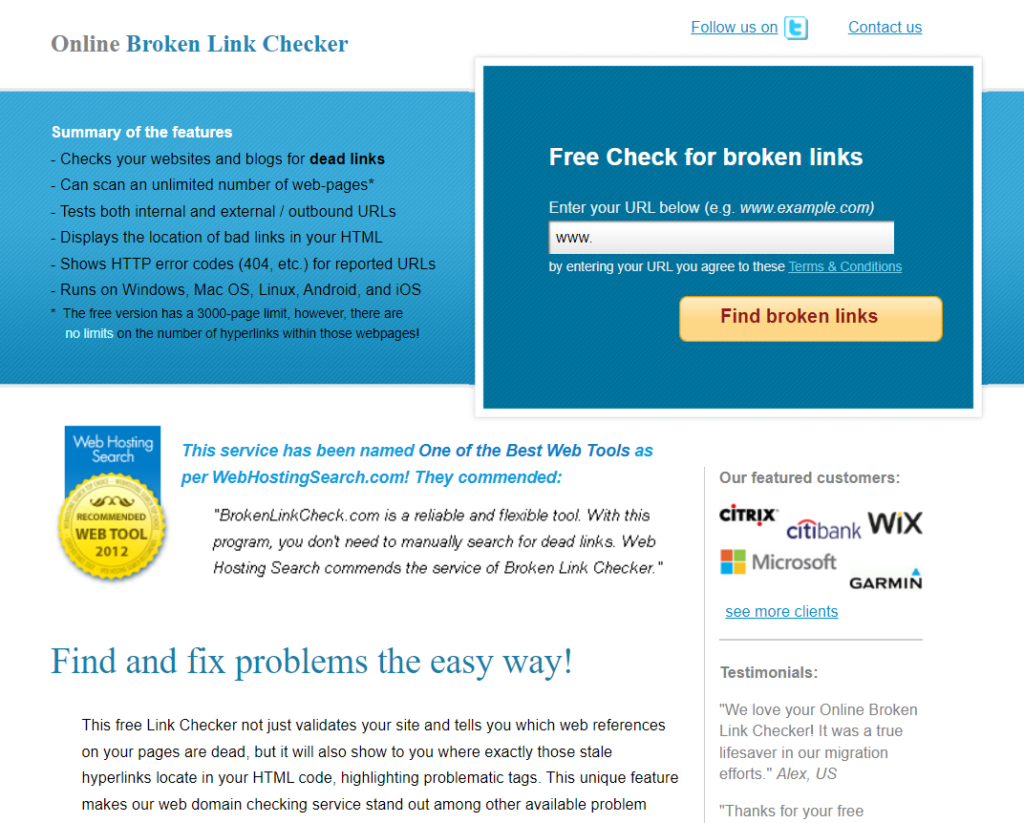Broken links are a common problem on the web, but they can also be a valuable opportunity for link building.
When a link on a website breaks, it’s usually because the page that the link points to has been moved or deleted.
This can be a frustrating experience for users, but it can also be an opportunity for you to get your website linked to other high-quality websites.
That’s because when a website owner finds a broken link on their site, they’ll often look for a new link to replace it.
If you can provide them with a relevant and high-quality link to your website, they’re more likely to use it.
This can help you to improve your website’s ranking in search engines and attract more visitors.
In this blog post, we’ll provide you with a complete guide on “Broken Link Building”
So if you’re looking for a way to improve your website’s SEO and attract more visitors, broken link building is a great way to do it. Keep reading to learn more!
Decoding the Enigma of Broken Link Building
To understand the concept of Broken Link Building, imagine this:
You’re exploring a city with a map in your hand, but some roads shown on the map are closed or no longer exist.
Irritating, right?
Broken Link Building operates on a similar principle. In the vast city of the internet, broken links are those non-existent roads.
Broken Link Building is a unique SEO strategy that involves finding broken links, creating relevant content to replace the broken links, and then persuading webmasters to replace their broken links with your content.
It’s a win-win situation! You help the webmaster maintain the integrity and user experience of their site, and in return, you get a valuable backlink.
This strategy differentiates itself from other link-building methods as it offers value to both parties, unlike traditional strategies which often involve one-sided benefits.
The Power of Dead Links
It’s natural to wonder why Broken Link Building would be effective. This strategy plays into the psychology of webmasters.
No one wants dead ends on their website, right? Broken links are detrimental to user experience and SEO rankings.
When you offer a webmaster a quick, easy solution to this problem, they’re likely to take it.
Let’s look at a case study to illustrate this.
Consider an influential blogger who had several broken links on her site.
When approached with a Broken Link Building proposition, she was thrilled to replace the non-functioning links with fresh, relevant content.
This strategy significantly improved her site’s user experience, and as a result, boosted her SEO rankings.
The success story underscores the effectiveness of Broken Link Building.
Related article: Broken Link Building: What It Is & How to Do It Right in 2023
Tools to Spot the Broken Links
With numerous tools available for identifying broken links, the choice can seem overwhelming.
Different tools have their own unique features, pros, and cons. Some tools might be specific to certain platforms, while others might offer more comprehensive scanning options.
To help you understand how to use these tools, let’s go through a step-by-step guide using one popular tool, “Broken Link Checker“.
With its user-friendly interface and detailed scanning options, this tool simplifies the process of finding and fixing broken links on your website.
Here are 10 AI tools that can help you out in Broken Link Building.
Ahrefs

Ahrefs is a popular SEO tool that offers a variety of features, including a broken link checker. The Ahrefs broken link checker can help you find broken links on your site and other sites. It also provides information about the referring domains and anchor text of the broken links, which can help you identify potential link-building opportunities.
Semrush

Semrush is another popular SEO tool that offers a broken link checker. The Semrush broken link checker is similar to the Ahrefs broken link checker, but it also provides additional features, such as the ability to track the status of broken links over time.
Majestic

Majestic is a link intelligence platform that offers a broken link checker. The Majestic broken link checker is known for its accuracy and comprehensiveness. It can help you find broken links on your site and other sites, and it also provides information about the referring domains and anchor text of the broken links.
LinkMiner

LinkMiner is a broken link checker that is specifically designed for link building. It uses AI to identify broken links on other sites that are potential link-building opportunities. LinkMiner also provides a variety of other features, such as the ability to track the status of broken links over time and to export broken link reports.
BuzzStream

BuzzStream is a link-building platform that offers a broken link checker. The BuzzStream broken link checker can help you find broken links on other sites that are potential link-building opportunities. BuzzStream also provides a variety of other features, such as the ability to contact the owners of the broken links and to track the status of your link-building outreach.
Hunter

Hunter is a tool that helps you find email addresses. It can also be used to find broken links. Hunter uses AI to crawl the web and find broken links on other sites. It then provides you with the email addresses of the owners of the broken links, so that you can contact them and request that they update the links to your site.
Screaming Frog

Screaming Frog is a website crawler that can be used to find broken links on your site. It can also be used to find broken links on other sites, but it is not as comprehensive as some of the other tools on this list.
WooRank

WooRank is an SEO tool that offers a broken link checker. The WooRank broken link checker can help you find broken links on your site and other sites. It also provides information about the referring domains and anchor text of the broken links, which can help you identify potential link-building opportunities.
Monitor Backlinks

Monitor Backlinks is an SEO tool that helps you track and manage your backlinks. It offers a variety of features, including: Backlink analysis:
Monitor Backlinks can scan your backlink profile and provide you with detailed information about each link, including its anchor text, referring domain, and trust flow.
Broken link detection: Monitor Backlinks can help you identify broken links in your backlink profile. This is important because broken links can hurt your SEO rankings.
Disavow tool: Monitor Backlinks can help you disavow bad backlinks. This is a necessary step if you’re trying to improve your SEO rankings.
Competitor analysis: Monitor Backlinks can help you compare your backlink profile to those of your competitors. This can give you insights into how you can improve your own backlink profile.
Reporting: Monitor Backlinks provides detailed reports on your backlink profile. This makes it easy to track your progress and see what’s working.
Broken Link Checker

Broken Link Checker is another free broken link checker that is easy to use. It can help you find broken links on your site and other sites.
White Hat Link Building Vs Broken Link Building
- Both are White Hat SEO Techniques: White hat SEO refers to the usage of optimization strategies that focus on a human audience, rather than search engines, and completely follow search engine policies and rules. Both broken link-building and other white hat link-building techniques aim to improve a website’s SEO in an ethical and user-focused manner.
- Value to the Audience: Both white hat link building and broken link building are designed to provide value to the audience. In the case of broken link building, this value comes from replacing non-functioning links with those that lead to relevant, high-quality content.
- Long-term Impact: White hat link-building strategies, including broken link-building, are known for their long-term positive impact on a website’s SEO. These strategies may take more time and effort compared to black hat techniques, but the results are more sustainable and resistant to changes in search engine algorithms.
- Building Relationships: Both techniques focus not just on gaining backlinks but also on building relationships with other webmasters or site owners. Broken link building, in particular, is a great way to establish relationships because you’re helping the other party fix an issue on their website.
- Avoidance of Penalties: White hat link-building techniques, including broken link building, help avoid penalties from search engines. Google and other search engines penalize websites that use black hat link-building techniques, which can lead to a significant drop in search rankings. In contrast, the use of white hat techniques, like broken link building, complies with search engine guidelines, helping to maintain and improve search rankings over time.
The Hunt for Perfect Content Match
So, you’ve identified a broken link on a relevant website. What’s the next move?
It’s time for you to dig into your reservoir of content and find a suitable replacement for that broken link.
The content you choose to replace the broken link must be not only relevant but also high in quality.
Why is this important?
Let’s put ourselves in the shoes of the webmaster for a moment.
Would you replace a broken link with content that is irrelevant or of poor quality? Likely not.
You want to provide your visitors with valuable and relevant information, and so does the webmaster of the site you’re reaching out to.
A case study that beautifully illustrates this point involved a health blog that was updating its resources.
They came across a broken link that led to a page about the benefits of green tea.
The health blog had a well-researched and comprehensive article about green tea, which was a perfect fit.
They reached out to the webmaster, and since the replacement was such a good match, the webmaster happily updated their link to point to the health blog’s article.
Crafting the Perfect Outreach
Once you have identified the ideal content to replace the broken link, it’s time to reach out to the website owner.
Finding the contact information can sometimes be as simple as checking the “Contact Us” page on their website.
However, if this doesn’t yield results, you may need to use tools like WHOIS to get the webmaster’s contact details.
Writing an effective outreach email is a craft in itself. Your email needs to be polite, concise, and most importantly, it should communicate the value the webmaster will receive by updating their broken link.
Avoid making your email sound like a generic template – personalize it as much as possible.
Here’s an example of an effective outreach email:
Subject: Broken Link Found on Your Website
Hi [Webmaster’s Name],
I was reading your article about [Topic], and I noticed a broken link. I thought you’d like to know so you can keep your site in top shape for your readers.
Also, I’ve written an article on the same topic that could replace the broken link. Here it is: [Your Article Link].
Thanks for your time, and have a great day!
Best, [Your Name]
Lastly, don’t forget about the power of follow-ups. If you don’t hear back after your first email, send a gentle reminder after a week or so. However, be careful not to become a nuisance with too many follow-ups.
Related article: 17 copywriting tips that’ll compel your audience to make a purchase or give you a lead
Embracing Rejection and Building Bridges
Let’s face it, not every outreach will be successful. You might face rejection, and that’s okay. It’s crucial to understand that rejection doesn’t necessarily mean the end of the road.
Sometimes, it can be the start of a meaningful relationship.
When faced with rejection, take it as an opportunity to build a relationship with the webmaster.
You could ask for feedback on your content or inquire about any future opportunities for collaboration.
One SEO expert faced rejection when he proposed a replacement for a broken link. Instead of taking it negatively, he thanked the webmaster for their time and asked if there were any other topics they were interested in.
This opened up a dialogue, and the webmaster eventually asked him to write a guest post.
This rejection turned into a valuable backlink opportunity, showcasing that sometimes, a ‘no’ can be the beginning of an even better opportunity.
Evaluating Your Success: The Metrics That Matter
Now that you’re well on your way to mastering the art of Broken Link Building, it’s essential to understand how to measure your success.
Metrics are the compass that guides your SEO strategy, helping you understand what’s working and what needs adjustment.
Key metrics in Broken Link Building include the number of broken links identified, outreach emails sent, responses received, links successfully replaced, and most importantly, the impact on your website’s traffic and search rankings.
Google Analytics is a powerful tool that can help you track these metrics.
Here’s a quick tutorial on how to use it for monitoring your Broken Link Building efforts:
- Log into your Google Analytics account.
- Navigate to “Acquisition” -> “All Traffic” -> “Channels”.
- Click on “Organic Search” to view the traffic coming from search engines.
- Monitor changes in your website’s organic search traffic and correlate this with your Broken Link Building efforts.
Remember, SEO is a long game.
Don’t get disheartened if you don’t see immediate results. Stay consistent, and over time, you’ll see the fruits of your labor.
Related article: How to rank Higher using On-Page SEO
Overcoming Hurdles in Broken Link Building
Just like any strategy, Broken Link Building comes with its own set of challenges. But don’t worry, we’ve got you covered with solutions to overcome these common hurdles.
One challenge you may face is the lack of response to your outreach emails.
If this happens, consider refining your email content to make it more personalized and value-driven.
A real-life example comes from an SEO expert who increased his response rate by simply adding a personalized comment about a recent post on the webmaster’s blog in his outreach email.
Another common challenge is finding relevant broken links. For this, broaden your horizon and consider using advanced tools or hiring a professional SEO agency to aid in your efforts.
For instance, a local business owner was struggling to find broken links relevant to his niche.
Upon hiring an SEO agency, they were able to leverage their vast resources and expertise to identify numerous broken link opportunities, leading to improved website rankings.
Wrapping It Up
To wrap it up, Broken Link Building is a powerful, yet underutilized, SEO strategy.
By identifying broken links, creating high-quality replacement content, conducting effective outreach, handling rejection positively, and regularly monitoring your success, you can harness the power of Broken Link Building to significantly improve your website’s SEO.
Now it’s your turn to take the reins. We encourage you to implement Broken Link Building in your SEO strategy.
And remember, just like any other strategy, the key to success lies in consistency and persistence.
We would love to hear about your experiences with Broken Link Building. Did you face any challenges?
How did you overcome them? How has Broken Link Building impacted your website’s SEO? Share your experiences and insights in the comments below.
Happy link-building!




